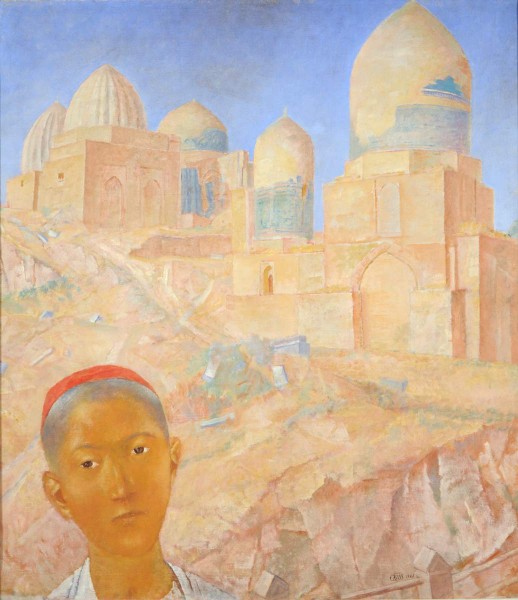Artist – Petrov -Vodkin

In 1921, as part of the scientific expedition, Petrov-Vodkin went on a creative trip in Central Asia. During this trip, he creates a series of works, and publishes travel notes in 1923 with a separate book Samarkandy. Petrov-Vodkin compared the significance of this trip for his creative development with the journey of 1907 to North Africa.
One of the main stops of the expedition is Samarkand, the oldest city of the region. One of the most famous local monuments is the monumental burial complex of Shah-i-Zinda (Shahs Zinda; translated from the Persian “Living Tsar”). The artist called this medieval Mausoleum a fabulous maze – a very accurate description, because the Zinda shahs were elevated spontaneously for several centuries.
Petrova-Vodkin is amazing the decorative techniques of ancient architects. In travel notes, he describes what he saw like this: “Overflow of colors in the finest patterns of ornaments ending in stalactites, argue with the evening sky and do not give up the sky with the purity and sonority of the gamut”.
The picture captures the panorama of the western side of the ancient complex. From here opens a view of the Mausoleum of Kazezda-Rumi. We see the dome of this tomb, decorated with major – clay ceramic tiles with tiles of unique color depth. “Why is this water! This is a converting spell of fire fiery!”-will write about these domes Petrov-Vodkin.
The picture is built on complex relationships of different shades of yellow. All architecture and landscape are modeled in one color. Such monochrome is characteristic of Petrov-Vodkin. The artist liked to work on solving a difficult task – to achieve expressiveness and volume, using a minimum number of colors, and sometimes one color. He will offer such studies to his students.